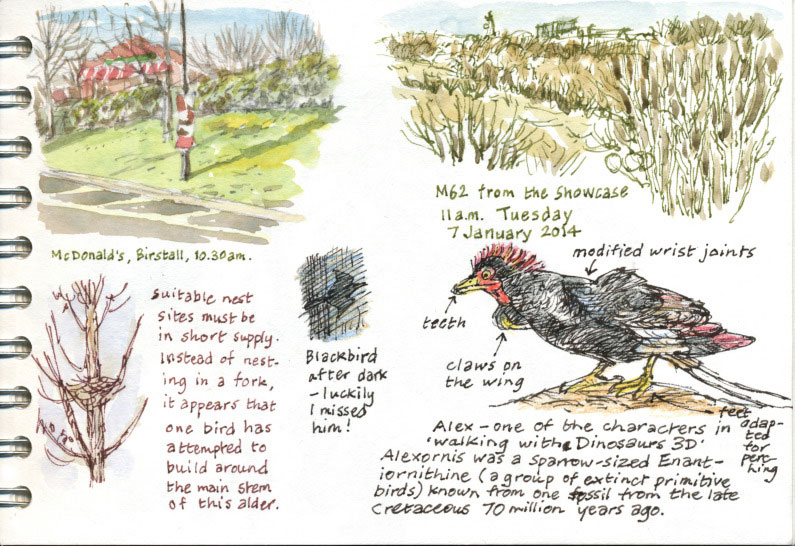Fossil Bird
7 January 2014
McDonald's, Birstall, 10.30 a.m.
Suitable nest sites must be in short supply. Instead of nesting in a fork it appears that one bird has attempted to build around the main stem of an alder.
Alexornis
Alex, one of the characters in Walking with Dinosaurs 3D (a must-see for me of course!), is based on Alexornis antecedens, a species of an extinct group of primitive birds, the Enantiornithines ('opposite birds'). It is known from only one incomplete fossil found in Baja California, Mexico, in 1971.
Enantiornithines had primitive features such claws on the wing and teeth but other features, such as feet adapted for perching and a modified wrist joint which enabled it to fold its wing in against its body, are similar to those of modern birds. Like them, Enantiornithines apparently had enhanced sight and hearing, but it is likely that they also had a well-developed sense of smell, something that is usually lacking in modern birds.
Jurassic Coast
Alexornis and the dinosaur cast of the movie date from the late Cretaceous period around 70 million years ago so they're closer to our era than the dinosaurs of the mid-Jurassic Yorkshire Coast, such as Meglosaurus, Coelophysis, Cetiosaurus and Camptosaurus, which date from 180 million years ago, 110 million years before the time of Alexornis.
Blackbird
A blackbird narrowly escapes extinction by hurtling out of a neighbour's driveway as I drive down the road at dusk. Luckily I missed him!
We haven't any clues as to what colour plumage Alexornis had but the white primary covets that he's been given in the movie would make him easier to spot at dusk. I always think that the plumage and skin colour of young coots and moorhens must be a throwback to some early ancestor, something similar to a modern cassowary but smaller, so I think the designers of the movie might have got it more or less right when it comes to 'Alex'.
